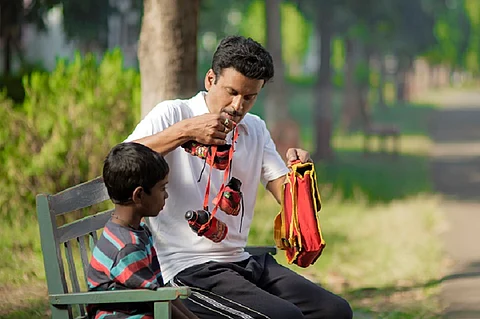

As Budhia's story comes to the big screen with "Budhia Singh: Born to Run", we take a look at the young runner's life, and that of a few other athletes who hope to represent the country's hopes for sporting success.
Ask actor Manoj Bajpayee and director Somendra Padhi what drew them to the Budhia story, and the first thing they point to is the impossibility of marking off heroes and villains from each other in this modern-day legend. And legend it is, says Soumendra, pointing out that Budhia arose to almost a demi-god status in Orissa at the peak of his fame. “The news would come that Sachin had scored another century, and Budhia had run another marathon. That’s how it was,” says the director.
While the story may be known, he clarifies, the truth of it remains buried under claims and counter-claims. “Each time you go to Orissa, you always find a different version of the same story. And people always have two opinions on each and every character.” It’s impossible to reduce the story of Budhia, the marathon boy who ran 48 marathons by the age of four, to black and white, he says. “There are a lot of gray areas, and those gray areas are also very poetic and beautiful.”
Manoj too says that it was the challenge of playing a character as complex as Biranchi Das (who was seen both as Budhia’s savior and his exploiter) that drew him to the film. “For me this is the role I wanted to play since the time I saw the news happening 9 years back. I wanted to play this role because there was quite a debate about the person that he was. Some people used to call him a hero, some people used to call him a villain to the child. So this conflicting opinion about him made him a great character for a script.”
"The difficulty was in getting into a sportsperson’s character and generating the same kind of passion as an actor,” he explains.
While he sees this passion and the discipline it demands as similar to that which drives good acting, he says, this is less easily recognisable in acting than in sports. "You can fake excellence in acting, but you cannot fake excellence in sports.”
Manoj adds that it was his goal to play the character true to that ambiguity, so that even at the end of the film it remains hard for the viewer to clearly decide one way or another about Biranchi. “And still you get a sense that there is only one person responsible for Budhia’s discovery and his welfare, and it’s this guy,” he says.
For Somendra, it was also the challenge of portraying the problems of a child prodigy on screen for possibly the first time. “I don’t think any film in India has dealt with this subject of child prodigies. This is the first story of its kind, where a special talent comes along and we don’t know what to do about that child.”
Somendra Padhi
As to their own reading of Biranchi Das’s actions, Manoj says, “For me he is neither a hero nor a villain, he is somebody who was quite a well-intentioned guy who’s done everything possible to help underprivileged talent, the job which the sports bodies should do in our country.”
Somendra agrees, but adds that it’s hard to judge any of the people involved in Budhia’s life, once we see things from their perspectives, whether it’s Budhia’s mother, who sold her son for Rs 800 or Budhia’s coach. “She lived in a 5ft by 6ft house. Maybe that was the right decision for the mother to take, because, there being four members in her family, it was very hard to feed the kid. So she made the choice of selling the baby. Just because she felt that he would be able to have a living, food in his stomach.”
As for the accusations of child abuse against Biranchi, Soumendra counters, “But then this same kid was begging on the street. Wasn’t that child abuse? Knocking on every car window and asking for money. But nobody spoke about that.” He agrees that you could fault Biranchi for his methods, but feels that his intentions at least were good.”
Budhia’s story, which was so well-documented on television and in print, and contained so many elements that already seemed out of a film script, threw up some interesting challenges for both the director and its lead actor. Somendra says that in his attempt to stay close to the truth, he ensured that real people and real places formed the backbone of the film as much as possible, eschewing professional actors for the most part. “We haven’t tried to protect the protagonists. We have exposed them, made them vulnerable, to see how it all comes out. If there is a true strength in the character, it will come out,” he says.